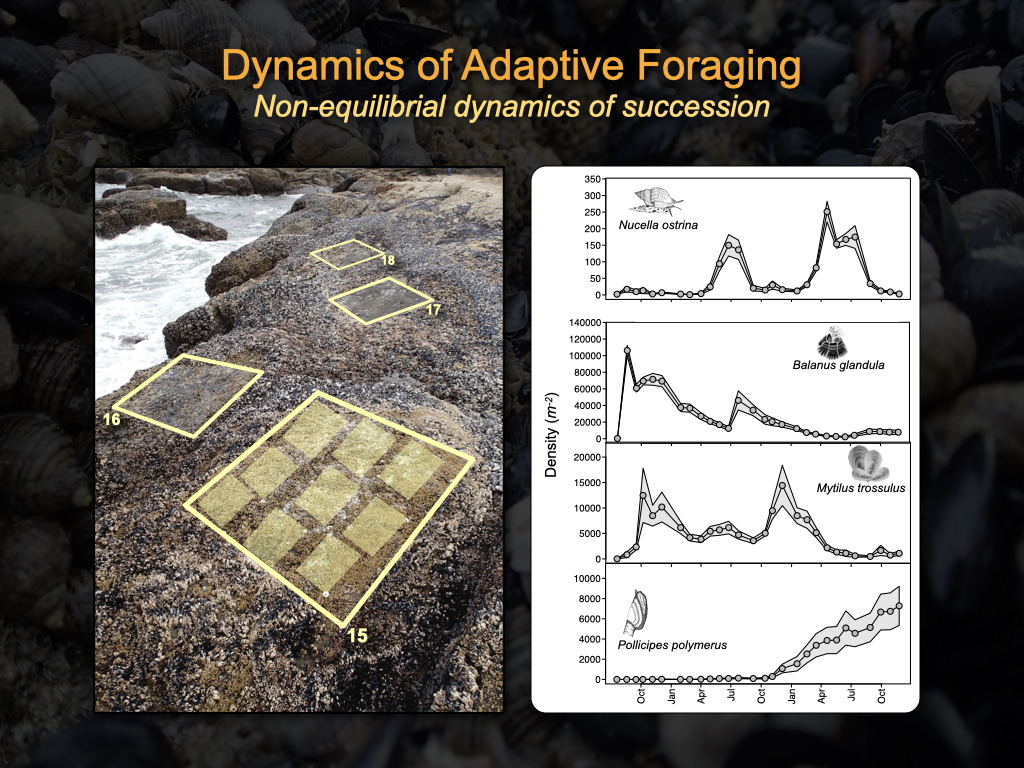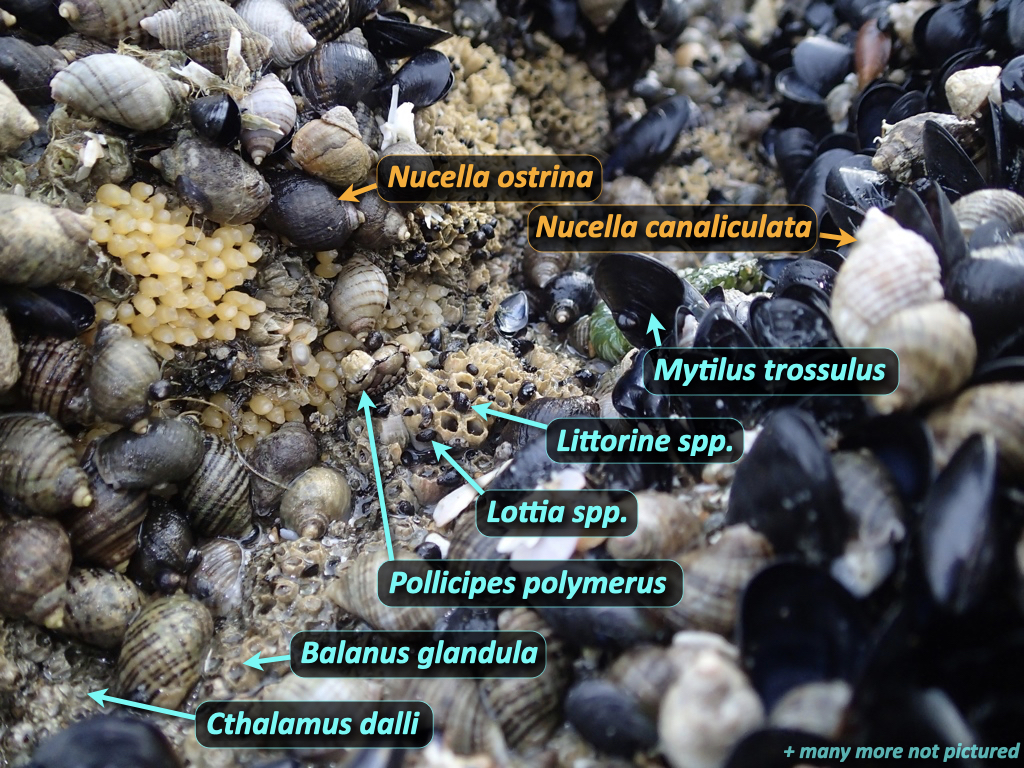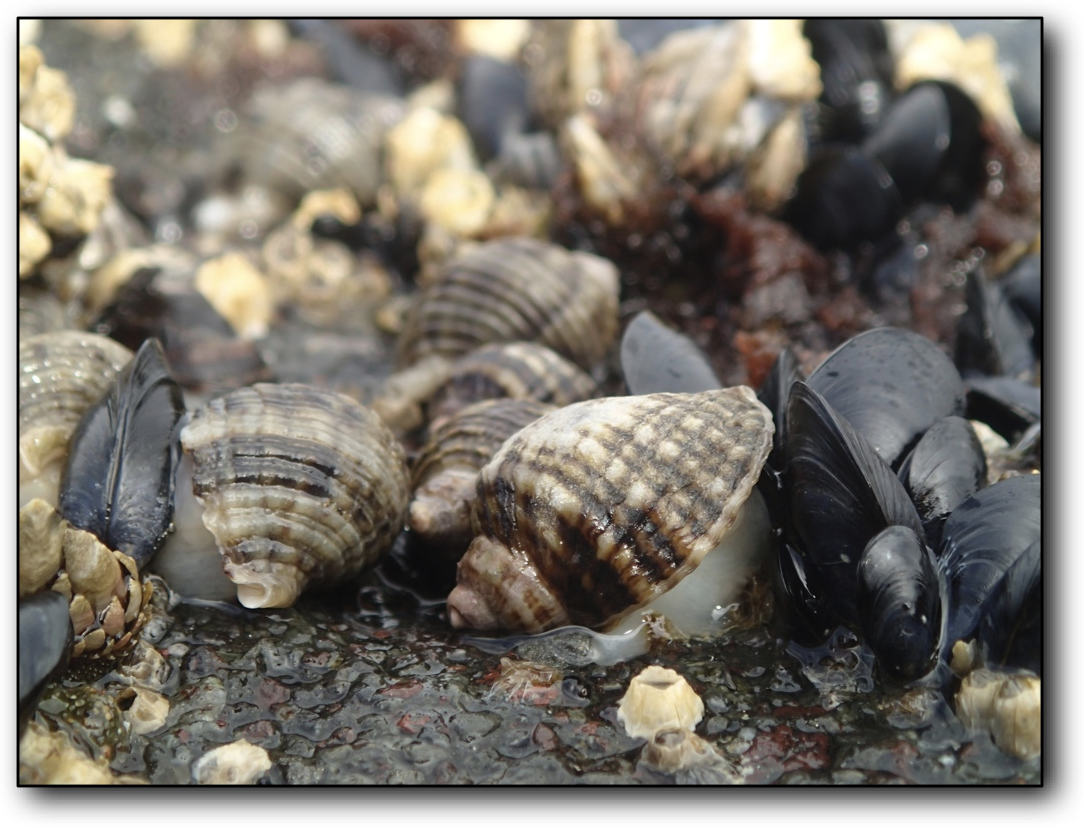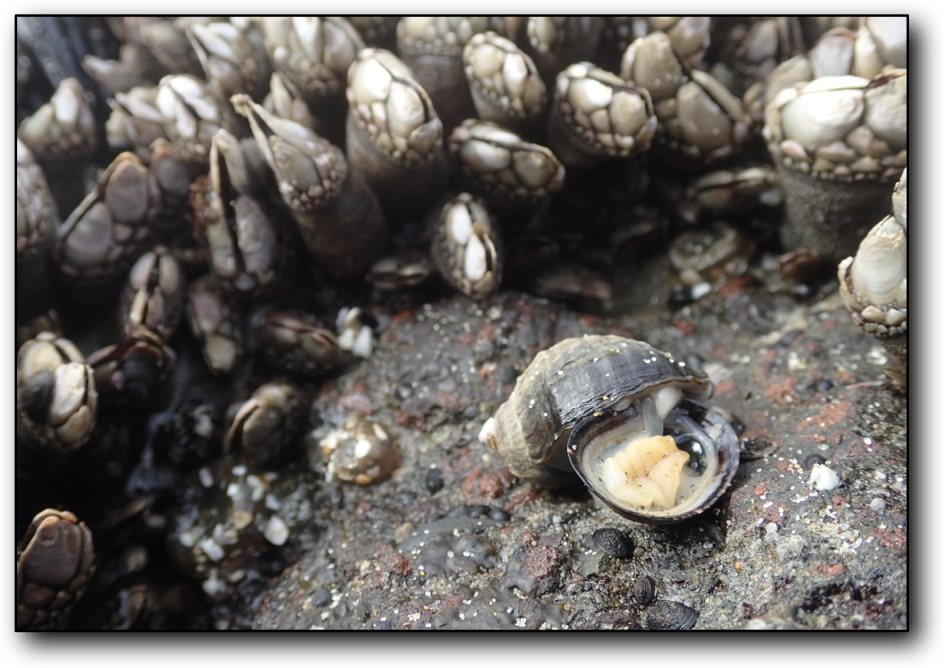EECS Project: Serial image analysis to infer spatially-explicit species dynamics
Develop, train, and implement new or off-the-shelf image recognition algorithms to identify and enumerate species in a large collection of fixed-location photographs that were taken repeatedly (on a monthly basis) over three years in a unique experiment of ecological succession.
Objectives
The aim of the here-proposed project is to help disentangle the role of species interactions in driving the abundance dynamics of a species-rich community in the Oregon marine intertidal. The collection of images represents 108 fixed-location time-series (each 36 months long for a total of ~3,888 images) in which the identity of ten to several hundreds of individuals requires determination. With some individuals surviving (and growing) over the entire time-series and others being present in only a single photograph, the time-series nature of these images offers both informative information on which to capitalize and challenges associated with the probabilistic prediction of rare occurrences. Key to success will be the optimized utilization of a painstakingly amassed set of 1,944 "training set" images in which the identity and precise x-y location of each individual has been recorded "by hand". Progress towards achieving the goals of this project, while informative and useful in their own right, will lead the way for numerous additional projects focused on understanding the dynamics of complex ecological systems, enabling more powerful statistical and machine learning approaches for which the current “training” dataset alone is poorly suited.
Motivations
Understanding how and why species abundances vary in space and over time represents a fundamental and pressing challenge for the field of Ecology. Many processes influence species abundances, including both extrinsic disturbances such as weather events, seasonality, and climate change, and intrinsic processes such as birth-death events, predator-prey interactions, and competition for limited resources. These multi-dimensional processes inherent to species-rich ecological communities mirror the processes that underlie complex adaptive systems in general.
Data Overview
9 Quadrats in 18 Patches for ~3 years
The experiment was conducted at Yachats Beach, OR. In July 2013, we established 18 randomly-located patches in the mussel bed of this site by scraping away all living material within them. Each patch was created as a square, 1.5 x 1.5 meters in size, had large bolts drilled into two opposing corners so that it could be relocated over time. The 18 patches are labelled by letters: A, B, C,...,F, G, AB, AC,..., AE (there is no AA patch). Within each patch we established 9 randomly-located quadrats, each 25 x 35 cm large, by placing small bolts in two opposing corners. The quadrats are numbered 1-9 (hence AC9 refers to the 9th quadrat in patch AC).
For the next ~3 years, we returned to the site each month to survey species' ensuing population dynamics. That is, we followed the system's patterns of succession. (A handful of months were missed due to dangerous wave conditions.)
Each month, each of the 18 x 9 = 162 quadrats was photographed. We then used ImageJ to locate (x-y coordinates) and count the individuals of every identifiable "species" in a subset of the pictures. That is, because of the amount of time required to process each picture, we could only manage to process 3 of the 9 quadrats in each patch over the entire duration of the time-series. (In each patch, the 3 focal quadrats are always the same 3 quadrats for the entire time series.) These data for 18 x 3 = 54 quadrats per survey represent the training data.
The ultimate goal is to train machines to identify species in the remaining 18 x 6 = 108 images per survey.
Data location
The training (and testing) data files (1,944 images total) --- including pictures (jpg format), the hand-counts of prey types (xls format), and x-y location of each identified individual (xml format) --- are located in the ExpPatchPics-Processed directory within the ExpPatch-Pics directory of this Git respository, orgranized by survey date.
The unprocessed pictures (3,888 images total) are not located in this Git repository (due to GitHub space limits). Instead, they reside on an OSU Box account, organized by survey date (with "-NP" foldername suffice for "not processed").
Overarching Goal(s)
We hand-counted 27 type categories of "species" in the training dataset. The ability to automate the counting of any, and any number, of these species is desirable. That said, the primary species of interest are the acorn barnacle Balanus glandula (Bg, Type 1) the gooseneck barnacle Pollicipes polymerus (Pp, Type 11), and the mussel Mytilus trossulus (Mt, the combination of Type 7 and Type 15). These are the most abundant species in the patches. They are also the primary prey to the focal predator species, Nucella ostrina whelks, whose feeding behaviour we are studying in the lab and with other EECS teams.
The three species of primary interest can, however, look an awful lot like some of the other, less common species. In particular, Balanus glandula can look a lot like two other acorn barnacles, Chthamalus dalli and Semibalanus cariosus. Further, Mytilus trossulus looks a lot like Mytilus californianus. (In fact, the two Mytilus species can't be distinguished when they're small, hence the Type 15 "Mytilus_sp" category.) Therefore, although it may at first seem easier to train machines one species at a time, it may be necessary to train machines on multiple species simultaneously (e.g. to focus on creating an "acorn barnacle machine".)



